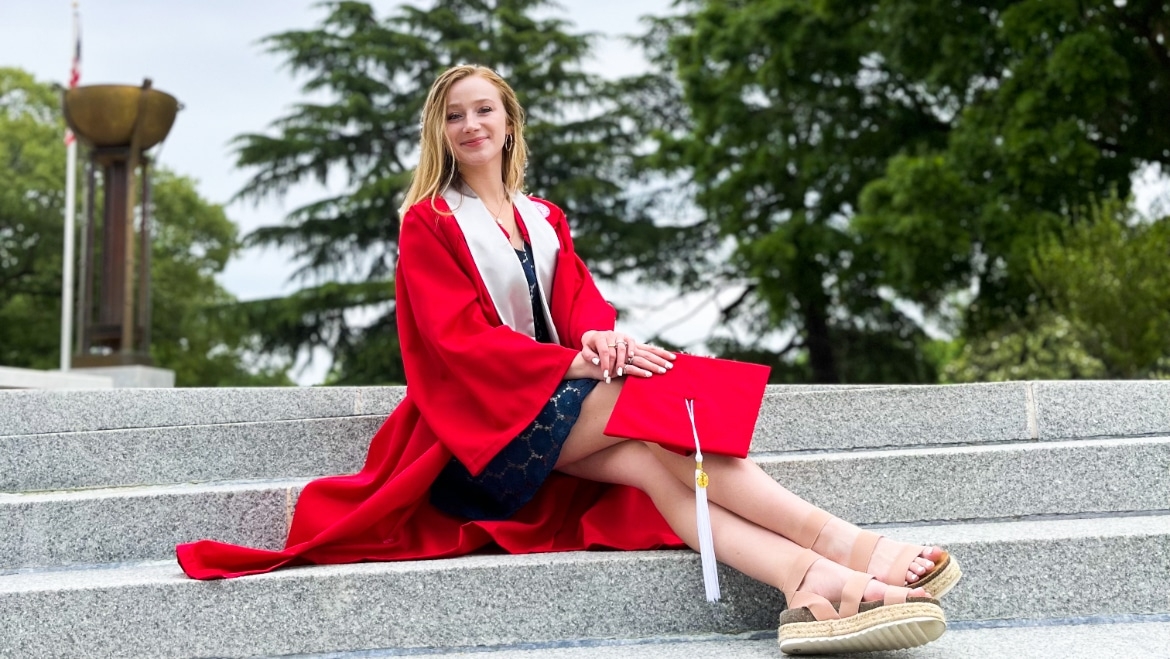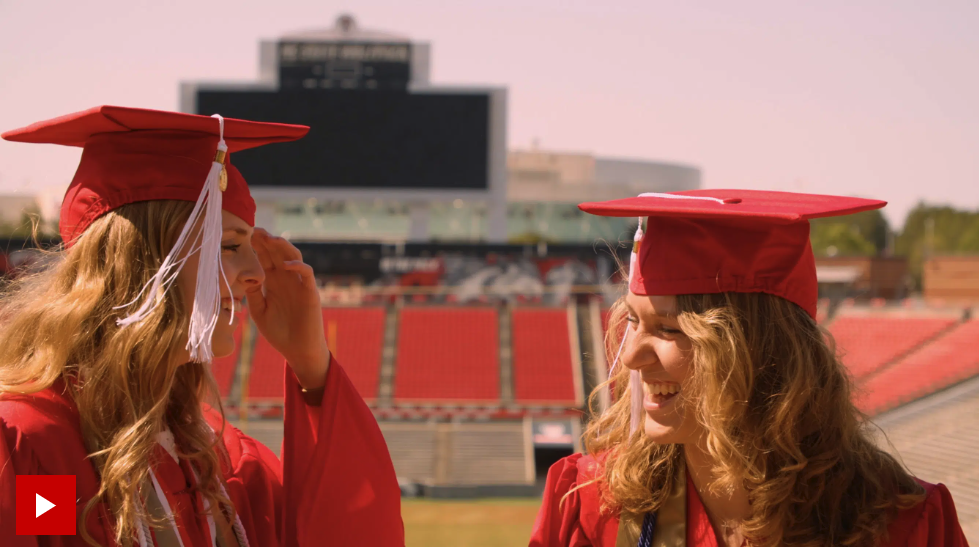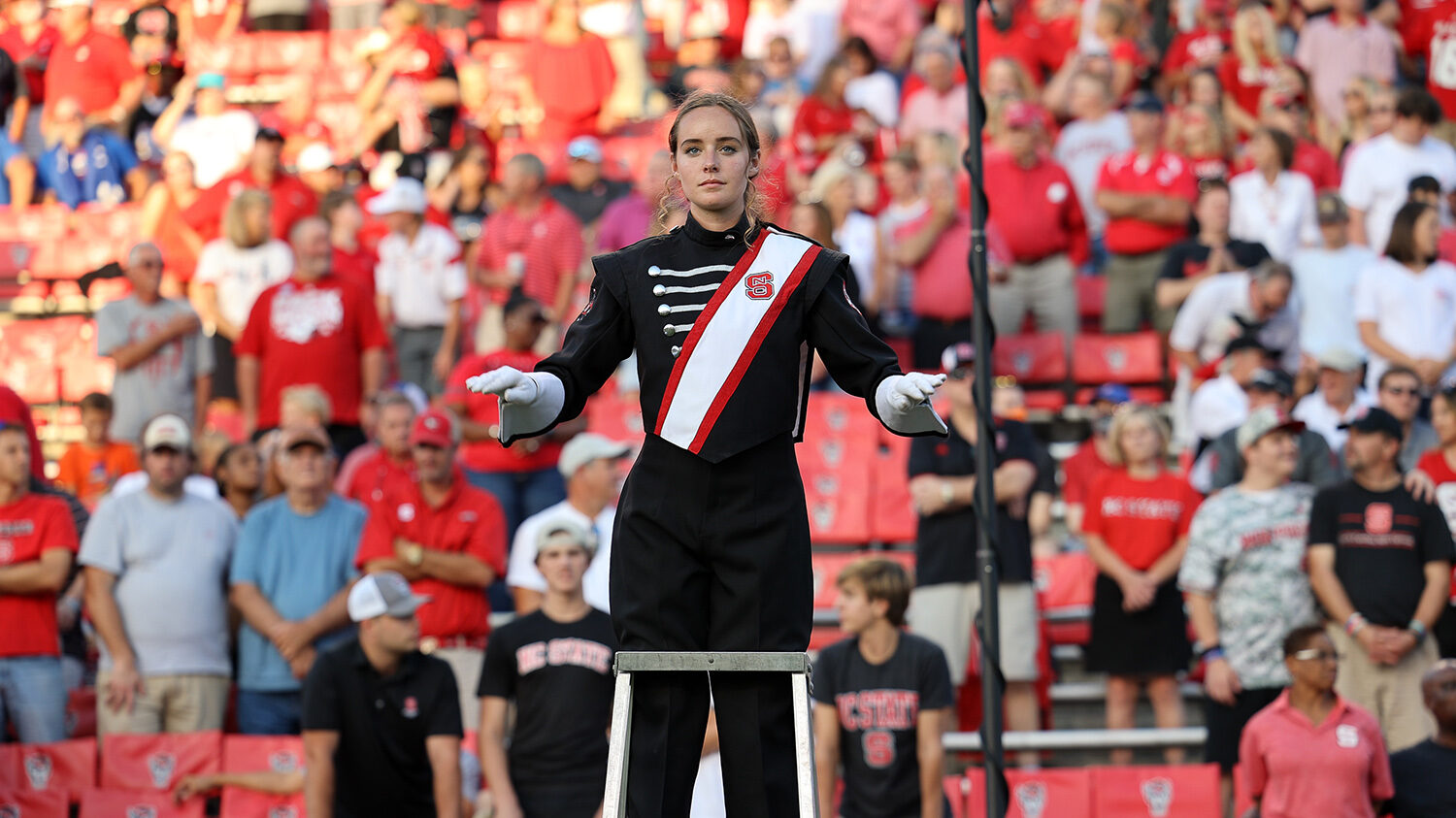A passion for music and rocket science

Tuba performance minor John Inness revives the NC State Brass Quintet during his final year studying aerospace engineering before he takes off for NASA and the Brass Band of Huntsville, Alabama.
When tuba performance minor John Inness returned to NC State after his co-op at NASA’s Marshall Space Flight Center in Huntsville, Alabama in the spring of 2019, he was disappointed to discover that the student-run brass quintet he’d been a member of had disbanded in his absence. Never one to shy away from a challenging goal, Inness set about recruiting brass students until he had enough interest to approach Department Head Daniel Monek in the fall about restarting the group. Thanks to donor support, particularly the Dr. Norman Greenberg Brass Quintet Endowment, Monek was able to greenlight the project as part of the department’s broader program supporting chamber ensembles for students.
The new incarnation of the NC State Brass Quintet, also known as Brickyard Brass, is offered for course credit and benefits from having a faculty coach, thanks to the endowment support. Applied music lecturer Jonathan Randazzo, the assistant principal trombonist for the North Carolina Symphony who teaches NC State’s low brass performance minors like Inness, has stepped into the role of coach for the quintet. “He comes to about every other rehearsal for us and it has helped make a world of a difference,” said Inness, a sixth year aerospace engineering major. “He brings a new light and, since he’s not playing as part of the group, he can hear from the outside how everything is sounding and pay closer attention.”
Being an official music department ensemble has also created performance opportunities for the group, such as a joint recital with the NC State Woodwind Quintet—another of the department’s curricular chamber ensembles—in March, two concerts with the wind ensemble, a featured performance on Inness’s final recital for his music minor, plus several other local gigs. Inness says the performance opportunities and having Randazzo as their coach have aided in the group’s musical development.
“[The concerts give] us something to work towards, because if you’re just working to play for yourself it’s a different environment than working to perform for others,” he said. “There’s a certain caliber that’s expected of us. And we have certainly grown a lot, and a lot of that is attributed to Jonathan’s coaching.”
Inness has performed extensively during his years at NC State, participating in the wind ensemble, symphony, tenor-bass choir, and now serving as the student director of Brickyard Brass. He also marched with the Power Sound of the South for about three days during his freshman year but decided it wasn’t for him.
[pullquote cite=”John Inness” color=”innovationblue” align=”alignright”]It feels like I’ve left some sort of mark on the music department with the things I have done, and hopefully [Brickyard Brass will] keep going after I’ve left.[/pullquote]
He enjoys the large concert band experience, but he missed the camaraderie and challenge of performing in a small ensemble. “It’s a chamber ensemble so everyone has their own part and you can’t hide behind a section,” he said. “Like if you play violin in symphony, you have ten-plus other players playing the same part. [In the brass quintet,] everyone’s playing their own part and it’s very exposed in that way, so it’s a different kind of playing. So the plus side for that, for me, is tubas don’t get many solos, and one of the pieces we’re working on starts out with a tuba solo. So it’s fun that way and it’s also a closer group together since there are so few people, so everyone knows each other well. And something else that I personally work on that I enjoy is arranging my own music for it.”
This semester, Inness is tackling an arrangement of Holst’s “Jupiter” from The Planets, which he’s arranging for double quintet so that Brickyard Brass can perform it in collaboration with the woodwind quintet. “My first arrangement was Pirates of the Caribbean and when I heard it [performed for the first time] I almost cried because I’ve been listening to it so many times, digitally, and listening to it live is such a different experience.”
Supporting student-led initiatives like the brass quintet is central to the Department of Music’s mission, according to Monek. “We strive to support the music interests of every student on campus,” he said, “whether that’s through our curricular ensembles, student-run ensembles, student organizations, courses, our lecture series, or something completely new. More than any other funding source, annual support from our donors enables us to meet the evolving needs of the student-musicians at NC State.”
Inness, who graduates in May, is Huntsville-bound again. He’s accepted a position with NASA as a guidance navigation controls engineer where he’ll be helping to develop control systems to steer spacecraft (“Literally rocket science,” he said). He’s also been offered a position with the Brass Band of Huntsville, and looks forward to rejoining the band, which he performed with during his co-op rotations. The last time he was part of the group he had the chance to perform underneath a Saturn V rocket for a crowd full of astronauts during a concert for the 50th anniversary of the moon landing. It was the ultimate melding of his two passions.
He’s grateful for all of the music opportunities he’s had during his time at NC State, and that he’ll get to leave something behind for future music students.
“That was pretty much a requirement when I was looking for college; it had to have a good band program,” he said. “[My expectations have been] more than fulfilled. I’ve gotten to do a ton of different cool music experiences here…I’d never played in a symphony before. So I loved learning what kind of playing I had to do for that compared to a wind ensemble. And I absolutely love playing in the symphony.
“It feels like I’ve left some sort of mark on the music department with the things I have done and hopefully [Brickyard Brass will] keep going after I’ve left.” ♫
[callout bodyfontface=”glypha” headingicon=”noicon” url=”https://performingartstech.dasa.ncsu.edu/about/wolf-tones/” target=”true” type=”img” bgcolor=”reynoldsred” img=”14616″ mediaposition=”left”]This article first appeared in the spring 2020 issue of Wolf Tones magazine. You can read the rest of the digital magazine here.[/callout]
- Categories:


